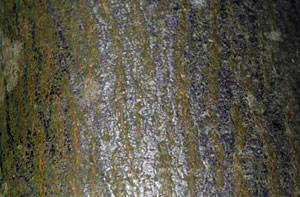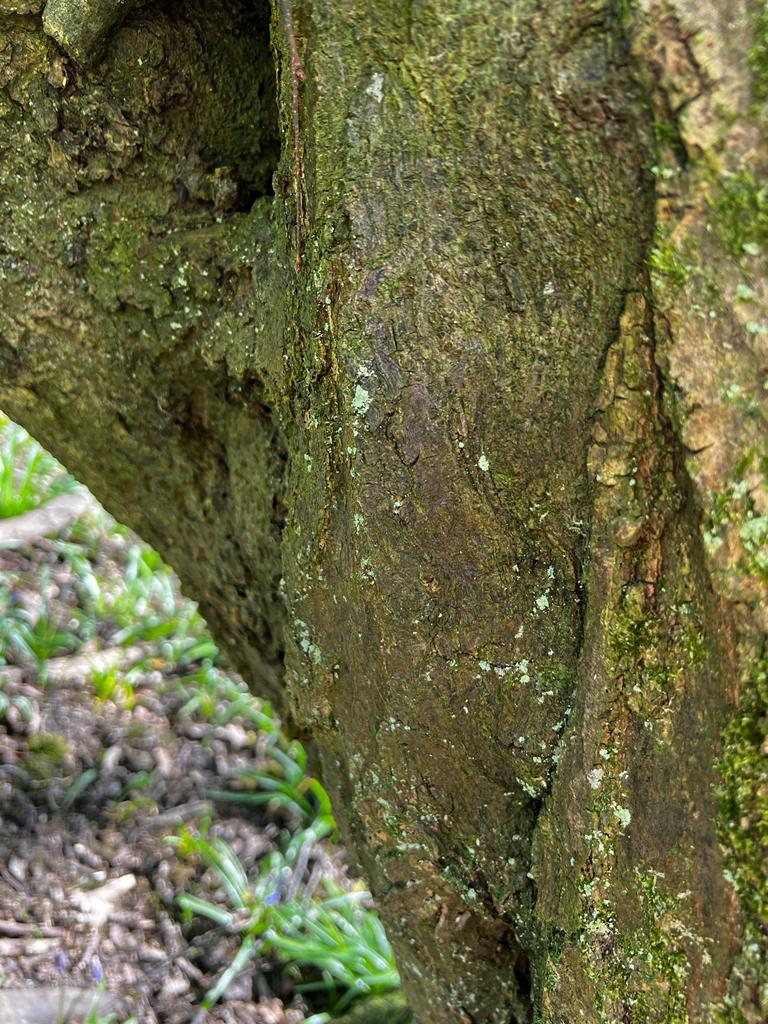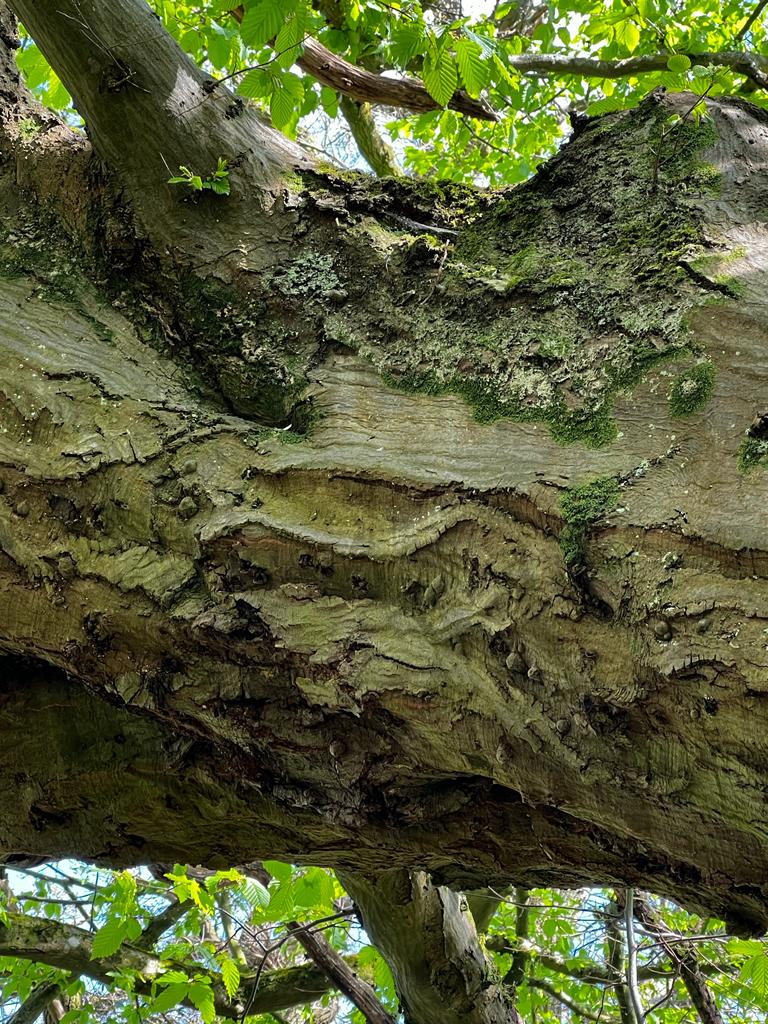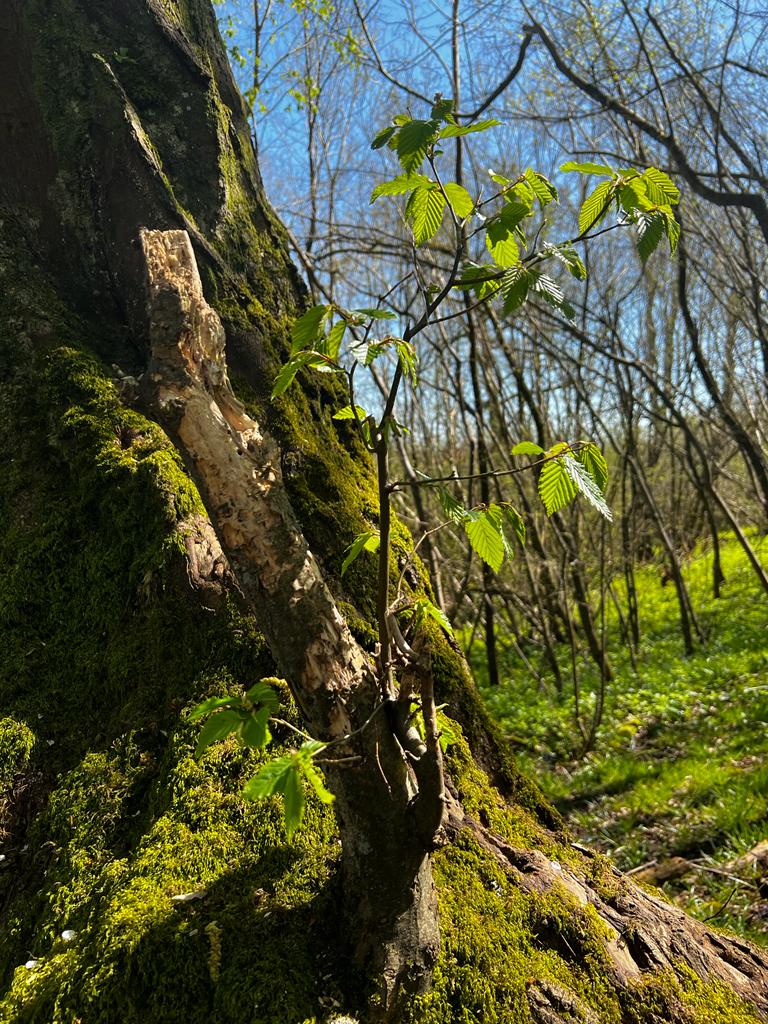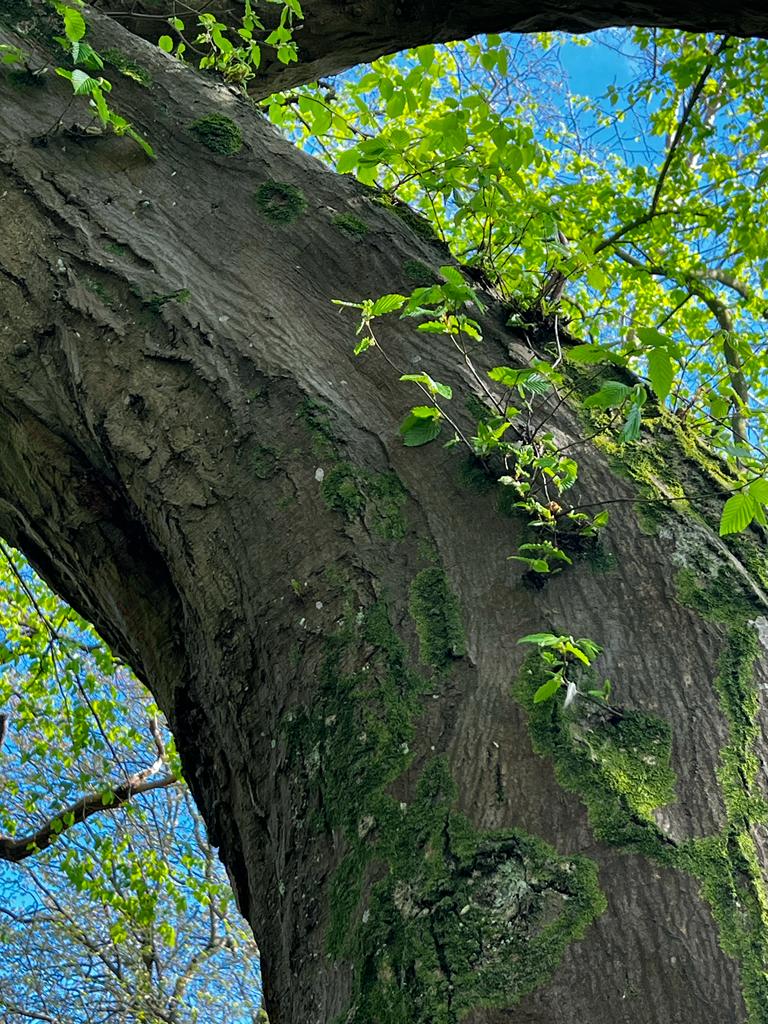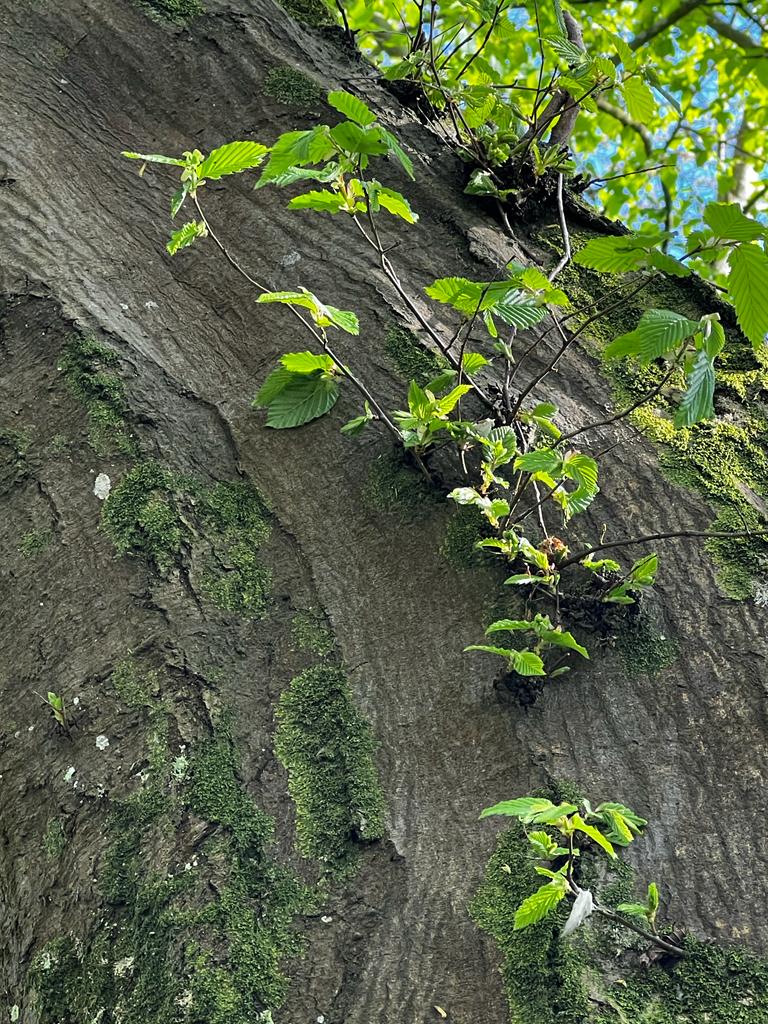Hornbeam
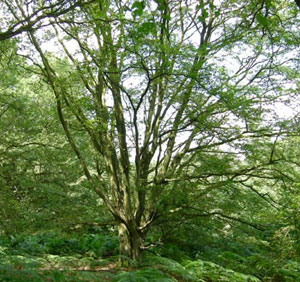
The Hornbean (Carpinus betulus) is a native tree and belongs to the same family as birch, hazel and alder (The Betulaceae). It is a bit like beech in appearance. Hornbeams are often to be found on clay soils through the South East (growing to a height of some 20 metres), and are common in places like the Epping and Hainault Forests. Although it naturally forms a single stemmed tree, hornbeam also coppices well. Trees were coppiced and cut in cycles to supply wood, which is quite dense Hornbeam thus supplied fuel, either directly or as charcoal as it was so slow burning. Charcoal was historically used in the smelting of iron. The wood has other uses being hard it was used for wheel hubs on carts, cogwheels in windmills etc.The tree provides a habitat for the larvae (caterpillar stage) of a number of moth species (such as Autumnal Moth,and the Common Emerald).
Leaf
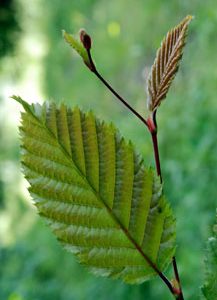
The leaf of the hornbeam is a simple leaf that is oval and pointed. The leaf is quite long (7 - 12 cm) but has a relatively short leaf stalk or petiole. The leaf edge / margin is serrated / toothed, with many, small 'teeth' ..The leaf blade (lamina) is slightly corrugated / uneven as it is divided up by (ten - thirteen) pairs of 'sunken' veins. The underside of these veins may be hairy, as is the leaf stalk. The leaves are arranged alternately along the stems. In the Spring, the young stems and leaves (as they unfurl) may have a reddish tinge to them. In the Autumn, the leaves turn yellow / orange and may persist on the tree for some time.
Buds, Bark & Stem
Not unlike the buds of beech, hornbeam buds are long and slender but close to the stem. The bark is (silvery) grey, and may have vertical, 'wriggly' markings that vary in colour from silver to orange. At intervals, the bark may bear occasional wide but shallow fissures, and as the trunk ages it may develop criss-crossing ridges.
